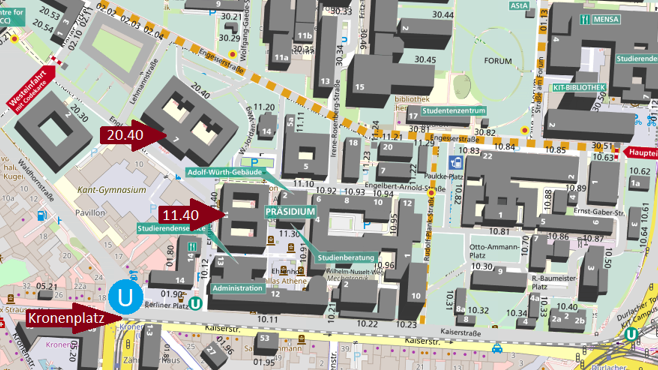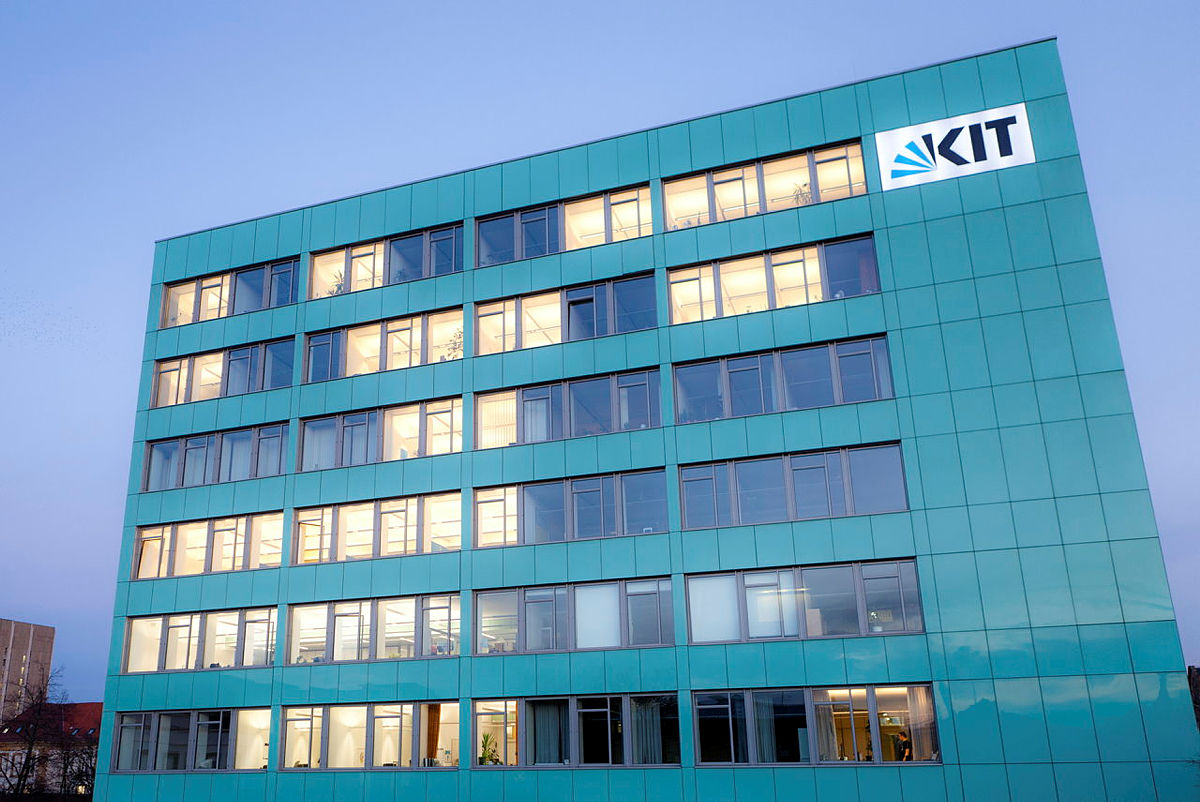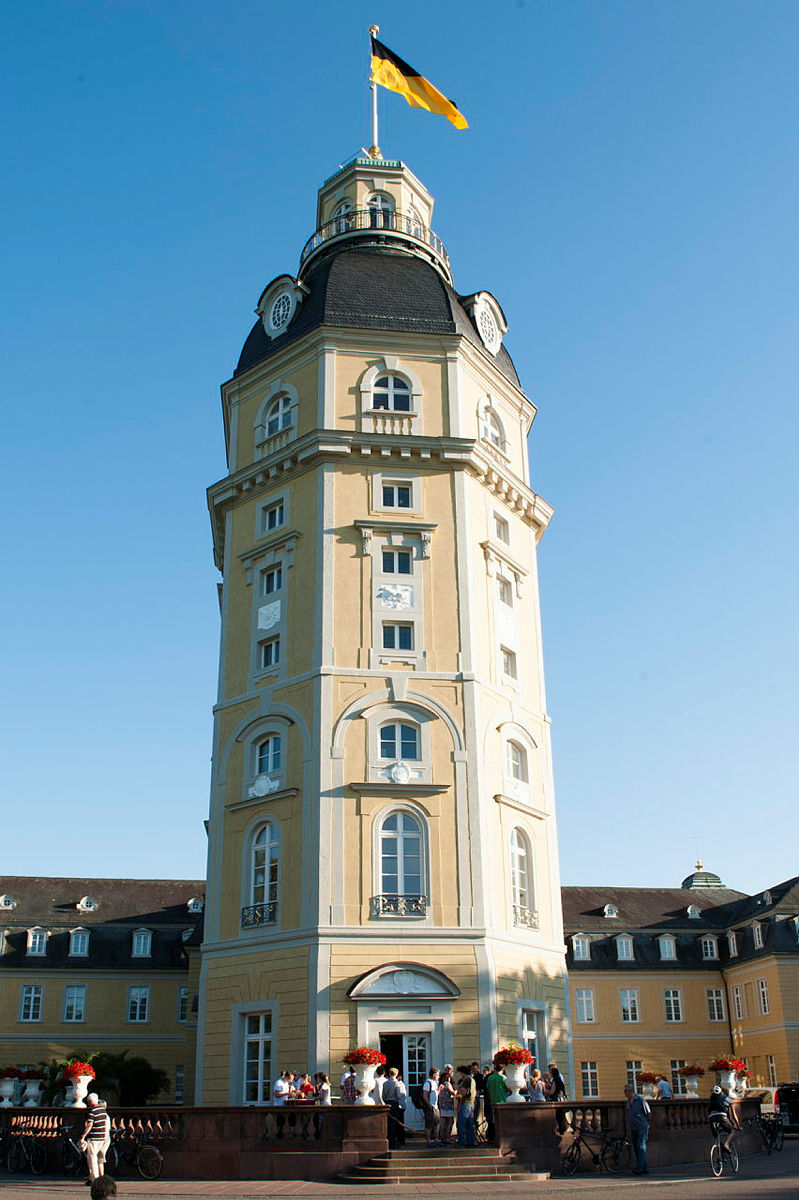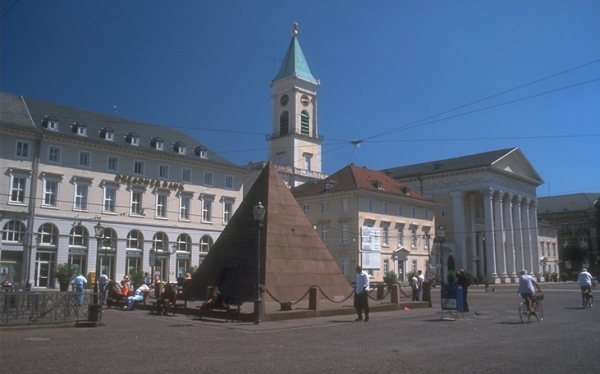Venue
By train:
The tram station “Kronenplatz” is located just a few walking minutes from the venue and can be reached by means of several trams and trains (1, 2, 3, S2, S4, S5, S7, S8, S51, S52)
The Deutschlandticket is valid on the KVV
Easiest: day ticket 3 honeycombs (KA plus something) 6,60€
Single ticket 2 honeycombs 3,30€, with Bahncard 2,50 €
Ticket machine at the Berliner Platz exit!
By car:
Access to the car park via the main entrance on Adenauerring (Engesserstraße 46) ! Please indicate at the barrier that you are a JISDM participant.
Visitor Adress: KIT-Campus Süd, Geodätisches Institut, Gebäude 20.40, Englerstraße 7, 76131 Karlsruhe
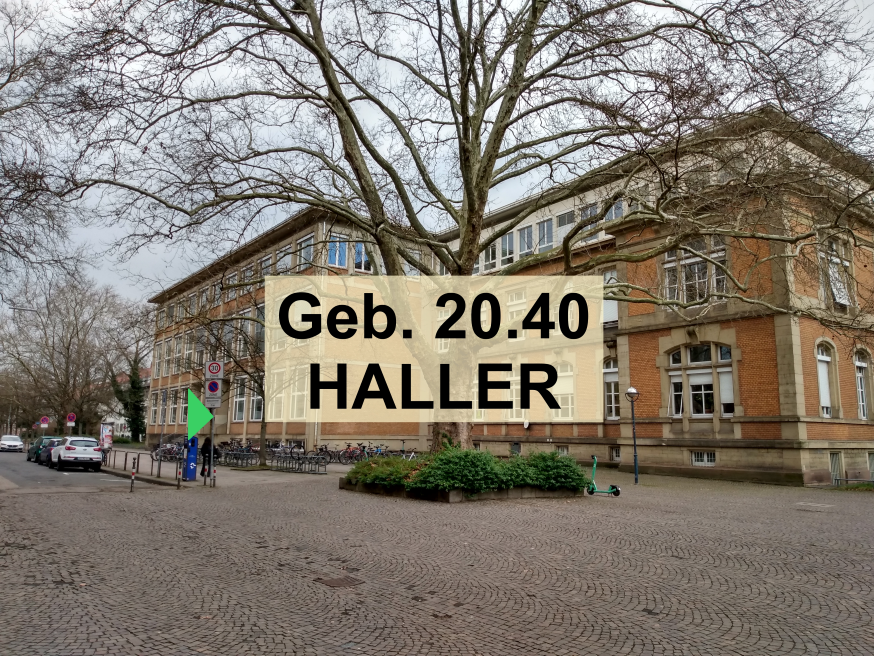
Room Haller is located in building 20.40. The Geodetic Institute is also housed here.
more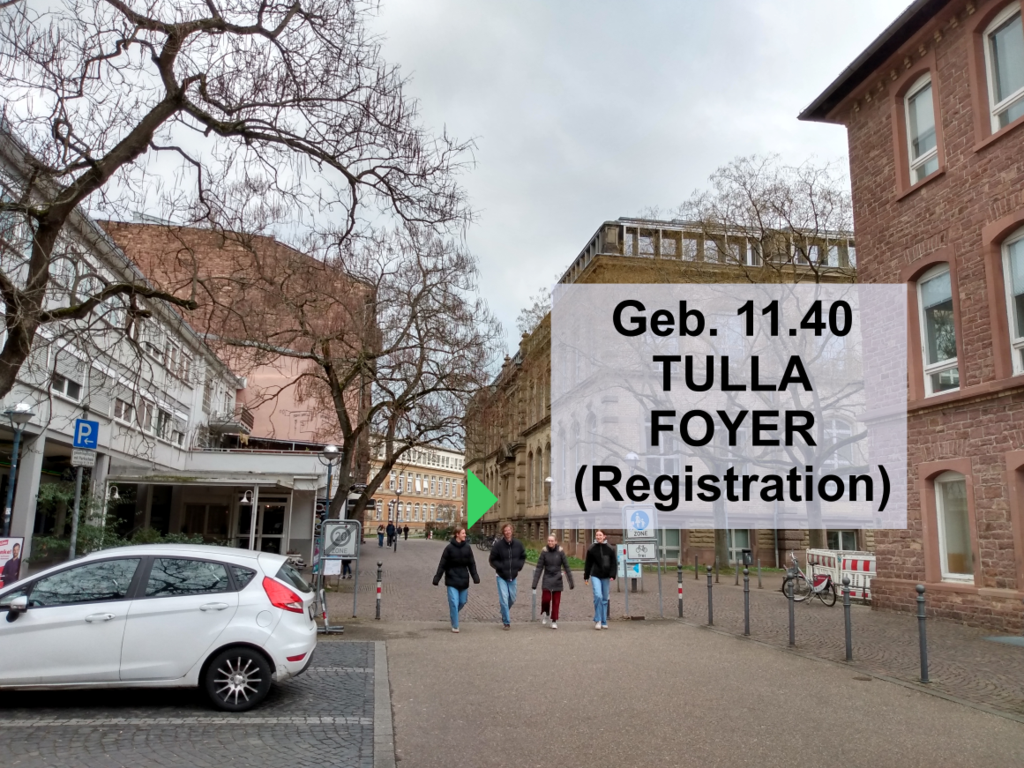
Room Tulla is located in Building 11.40. This is where registration and most lectures take place.
moreKIT
KIT was created in 2009, when the University of Karlsruhe (founded in 1825) was merged with the Karlsruhe Research Centre (founded in 1956). This merger created a unique constellation that unites the classic university world (focussing on a broad range of disciplines and knowledge) with the Helmholtz Association world (focussing on infrastructure for the big and urgent challenges of our society). KIT employs almost 10.000 people, which are responsible for research, teaching (more than 22.000 students are currently inscribed) and innovation. The scientific disciplines of KIT are organized in five divisions, which are further subdivided into institutes. The Geodetic Institute Karlsruhe (GIK) was founded in 1868 and is one of the oldest geodetic institutes in Germany.
Karlsruhe
Karlsruhe with its approximately 300.000 inhabitants is the third largest city of the German federal state Baden-Württemberg. Created as a baroque planned city, Karlsruhe is centred around its palace and the corresponding garden. The characteristic fan-shaped streets leading to the palace give Karlsruhe the nickname "fan city".
Karlsruhe is primarily known for being the seat of some of Germany’s highest courts such as the Federal Court of Justice and the Federal Constitutional Court. However, with the Centre for Art and Media (ZKM), Karlsruhe also hosts one of the world’s most important art institutions, which has earned the city the designation as UNESCO City of Media Arts in 2019. In addition to art and law, the proximity to nature, especially to the black forest, is one of the most important characteristics of the city.


